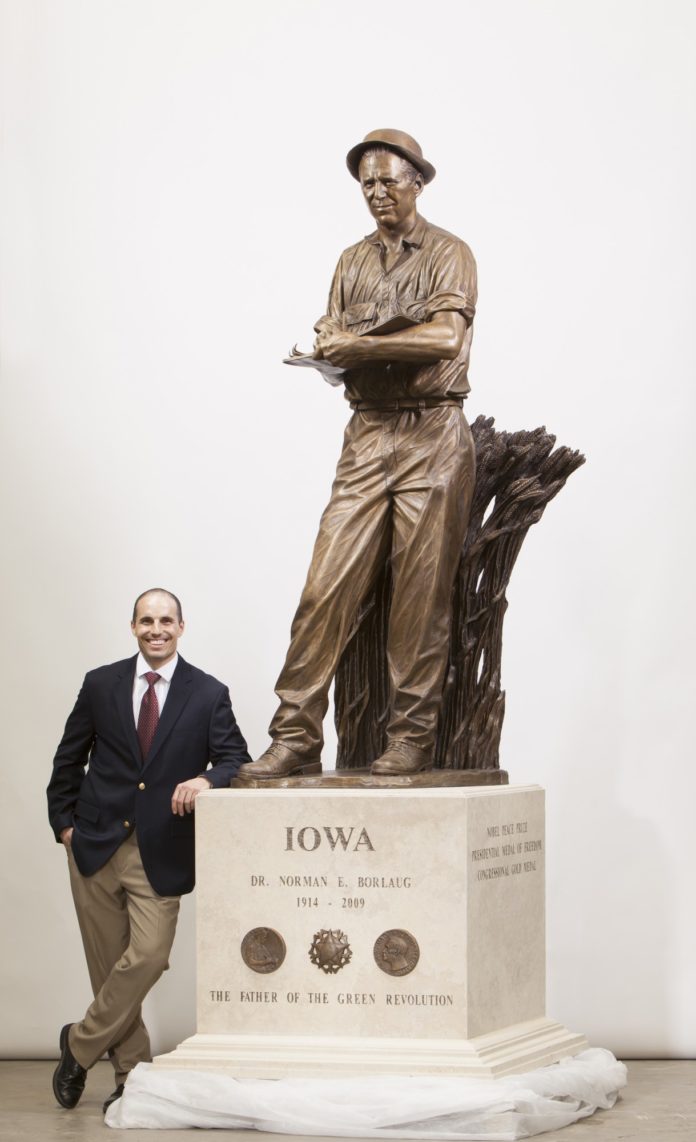
By Luke Araujo | Staff Writer
The chosen artist for the statues of Baylor’s first Black graduates was announced by President Linda Livingstone as Benjamin Victor. The statues are of Robert Gilbert and Barbara Walker and will be placed in front of Tidwell Bible Building.
Rev. Malcolm Foley, Ph.D., special adviser to the president for equity and campus engagement, said Victor was chosen for the quality of his work and because the family of Gilbert and Walker herself favored him.
“Ben is extremely accomplished, and he understands Baylor’s purpose in erecting these statues: to bear witness to a history often suppressed,” Foley said. “It is our hope that Ben captures the spirit of Rev. Gilbert and Ms. Walker in a way that inspires every Baylor student to courageously seek the good of their neighbor wherever the Lord places them.”
Victor, a sculptor with almost 20 years of experience, graduated from Northern State University in South Dakota with a bachelor’s degree in art. He said one of the required classes he took was a sculpting class that changed his whole career.
“I picked up clay for the first time in college,” Victor said. “It was really amazing. It just worked for me, and I’ve been sculpting ever since.”
Victor said in order to apply to be the sculptor for the statues of Baylor’s first Black graduates, he had to send a resume and take photos of his earlier works, among other things.
“It ended up being a lot of work just to apply,” Victor said. “In that process, I included drawings of what I thought the two sculptures could look like. That was in the second phase of applying.”
Victor said he finds the graduation of Gilbert and Walker inspiring, given he went to school at a time when Black students were not allowed to go to the same schools as white students.
“I want the two pieces to reflect that [inspiration] and the sculptures to be both welcoming and have an interactive quality to them,” Victor said. “I would like students, when they walk up to the sculptures, to feel like they are having a conversation with these two great people in campus history, state history and even U.S. history. It was a time when all these doors were finally being opened to Black people around the country. It’s an honor to be a part of it, and that’s what I’m trying to center the design around.”
In the U.S. Capitol, Victor said he is currently working on making a statue of Daisy Bates, a leader of the NAACP who worked with the Little Rock Nine — a group of nine teens who were the first Black students to attend Little Rock’s Central High School in Arkansas.
“Working on that for the U.S. Capitol simultaneously with the project here for Baylor is just a dream come true,” Victor said. “I get to really immerse myself in the study of the civil rights movement. Heroes like Mrs. Walker, Rev. Gilbert and Daisy Bates carry a legacy I know will never be forgotten. It’s a great time in history that we’re memorializing and monumentalizing the lives of these individuals.”
Victor said he is working with both the families of the two students and Walker herself on the project.
“I get input from the families and Mrs. Walker because she’s here and ready to talk about this,” Victor said. “She was on the panel for the selection. That was an honor, being able to do a Zoom call and getting to see her and talk to her. I’m working with the families very closely and with the university’s architectural design committees to make sure the site itself communicates what we want and fits congruent to the campus’ design.”
Foley said he views this as an opportunity for Baylor to bear witness to where Baylor has been and the alumni who have made it into what it is.
“Jim Crow’s vestiges and tendrils were still present,” Foley said. “They came on campus before the Civil Rights Act, but that period was the height of the civil rights movement. Black men and women then were fighting all over the nation for equality, even as they are now.”
The project is expected to be completed within the next year and a half, Victor said.
“I’ll be coming out to Baylor to work with students and talk to campus members,” Victor said. “I’d like to be a part of the campus for a while so they can see and talk about the sculpture project. Hopefully, we can gain some excitement for it as well.”




